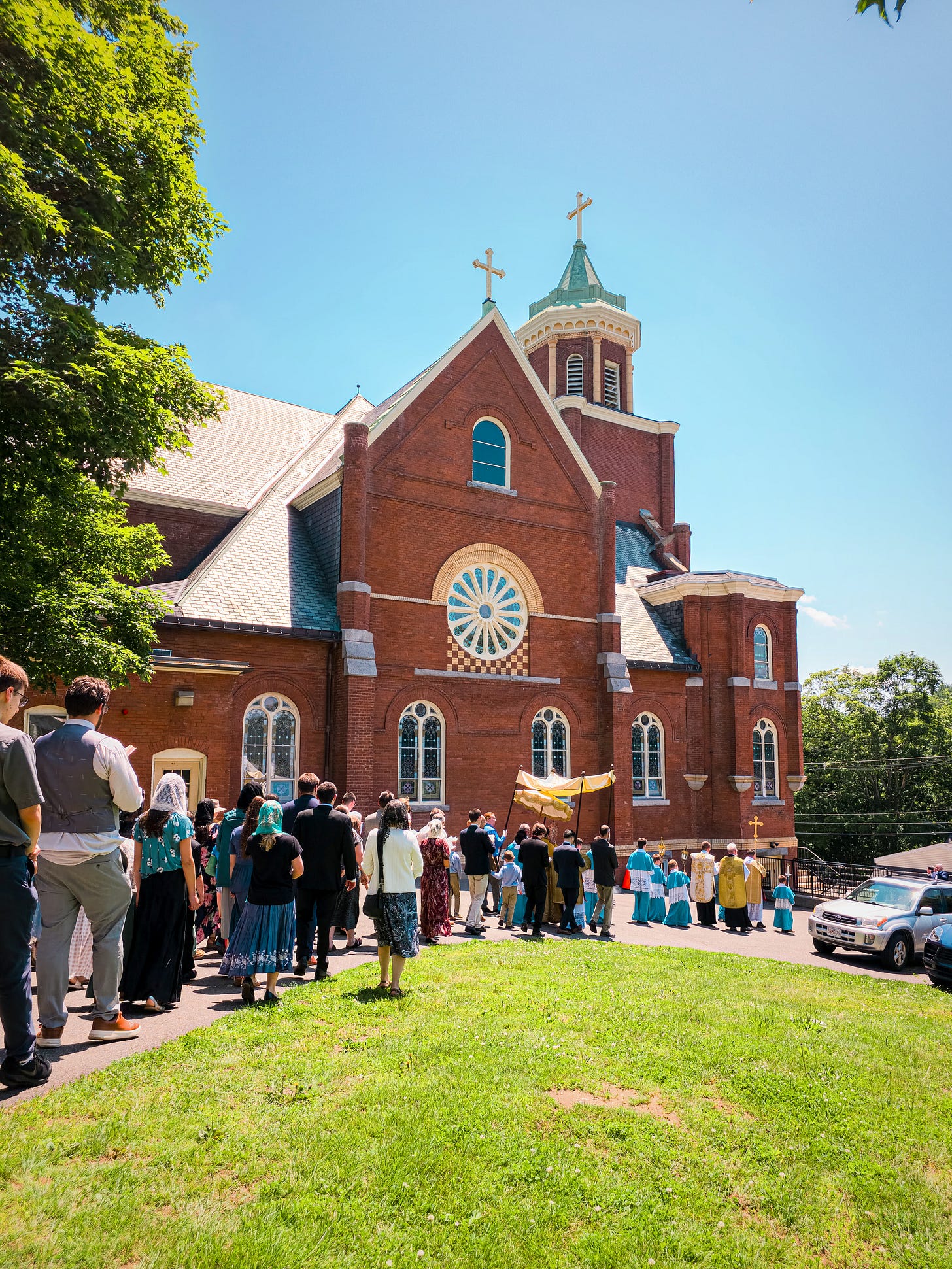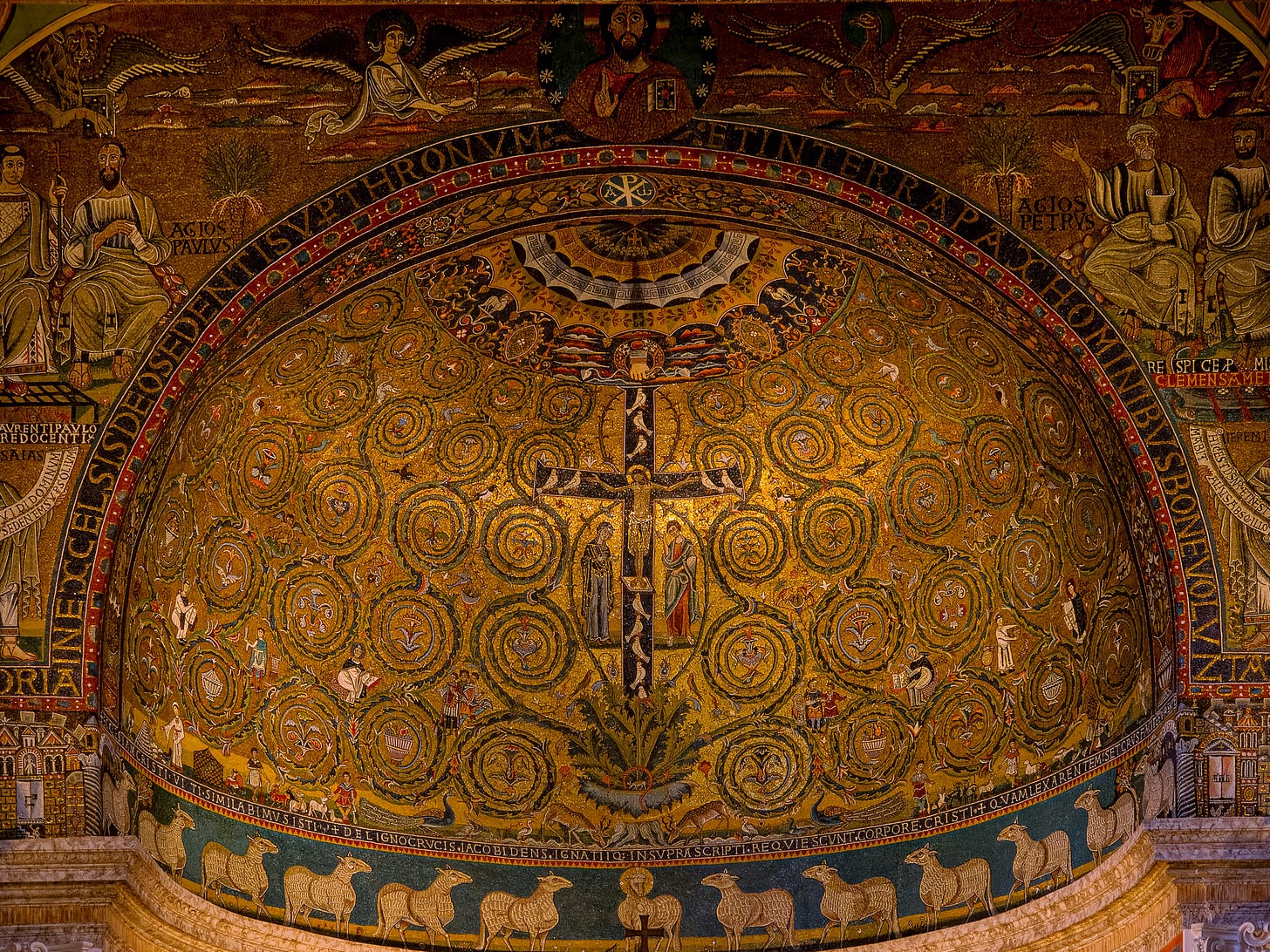On Thursday myself and a friend drove out to the rolling hills of Western Massachusetts to the sleepy town of Warren, to attend a Corpus Christi mass in the Old Rite. The Mass was followed by a procession onto the streets of the town as the Blessed Sacrament was to a makeshift altar, I looked off in the distance at the hills and valleys covered in trees and I said to myself as impressive these golden vestments and pageantry are none of it is even comparable to the glory of nature. The hills and the trees have no need to put any effort into adoring Christ, they do so by simply existing. In those moments I was reminded of one of my favorite poems, Gerard Manley Hopkins's God's Grandeur. “The world is charged with the grandeur of God. It will flame out like shining from shook foil”. I looked upon the monstrance resting on the altar and remembered something a priest said on a retreat: the rays of the monstrance are God's presence radiating throughout the world.
I find that Corpus Christi is probably one of the most misunderstood feasts in the liturgical year. This feast which celebrates Christ's real sacramental presence in the bread and wine which become his body and blood are either explained away in vague language palatable to modern ears or confine Christ's power by abusing scholastic language. Very rarely are we charged with what the implications of this feast are for us. Consider that, we have all received Christ's body and blood in the sacrament, Christ dwells within us and in the monstrance he leads us in procession. Something powerful happens, the monstrance becomes a mirror, God is not confined to the walls of the church nor is he confined to the monstrance. In this moment we all visibly represent the body of Christ because Christ dwells within us.
In his book Images of Hope: Meditations on Major Feasts, Pope Benedict XVI uses the Apse Mosaic of San Clemente in Rome as the subject for Corpus Christi. I have reflected on this subject extensively but until I read Benedict's reflection, it never occurred to me as explicitly eucharistic, yet it is. In the words of the late Pope “it shows, indeed, how the eucharist spans the whole world and transforms it… the world should become eucharistic, should live in the vine of God”. The vine of Christ is like the rolling hills and verdant forests in the height of summer when nature is at her peak. Our little procession was not one which was in opposition to the world but one which joined creation in praising our Creator.
This is what this feast calls us to do, we are called to be transformed by the food we receive, not to let our vine wither away but for it to bloom and extend. It is only for a few short moments every year that we unite ourselves in procession, the monstrance returns to the sacristy, the host to the tabernacle and we must go on to continue with our routines. Despite this Christ's presence still emanates throughout the world and he remains present not only on sunny days in hills and forests but in drab city streets, in hospital rooms, soup kitchens and prisons. In these places there are no flowers or candles adorning altars, however, it is here where the rays of Christ presence beam the strongest, it is here, through allowing Christ to dwell in us, that we can live Corpus Christi and serve Him daily.





